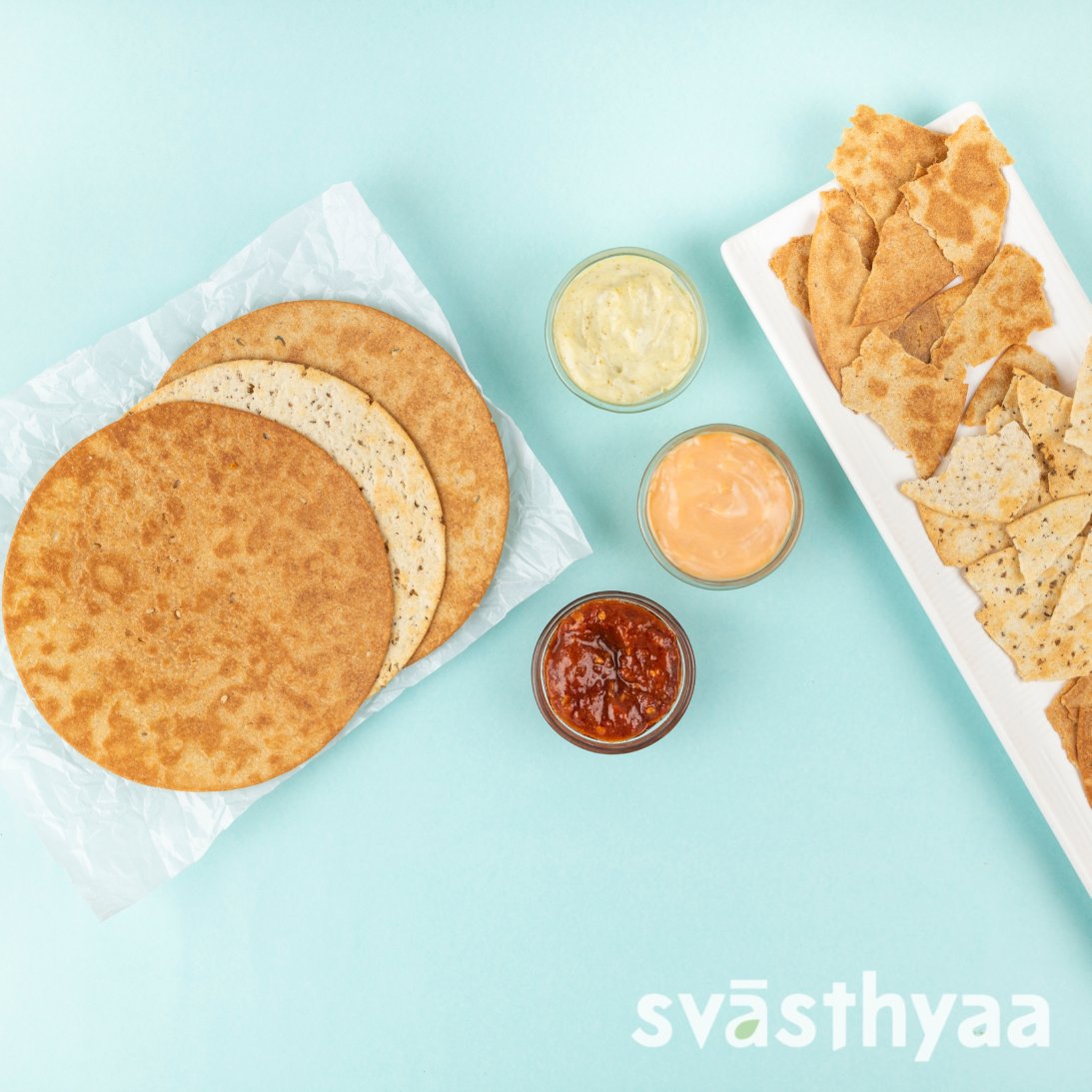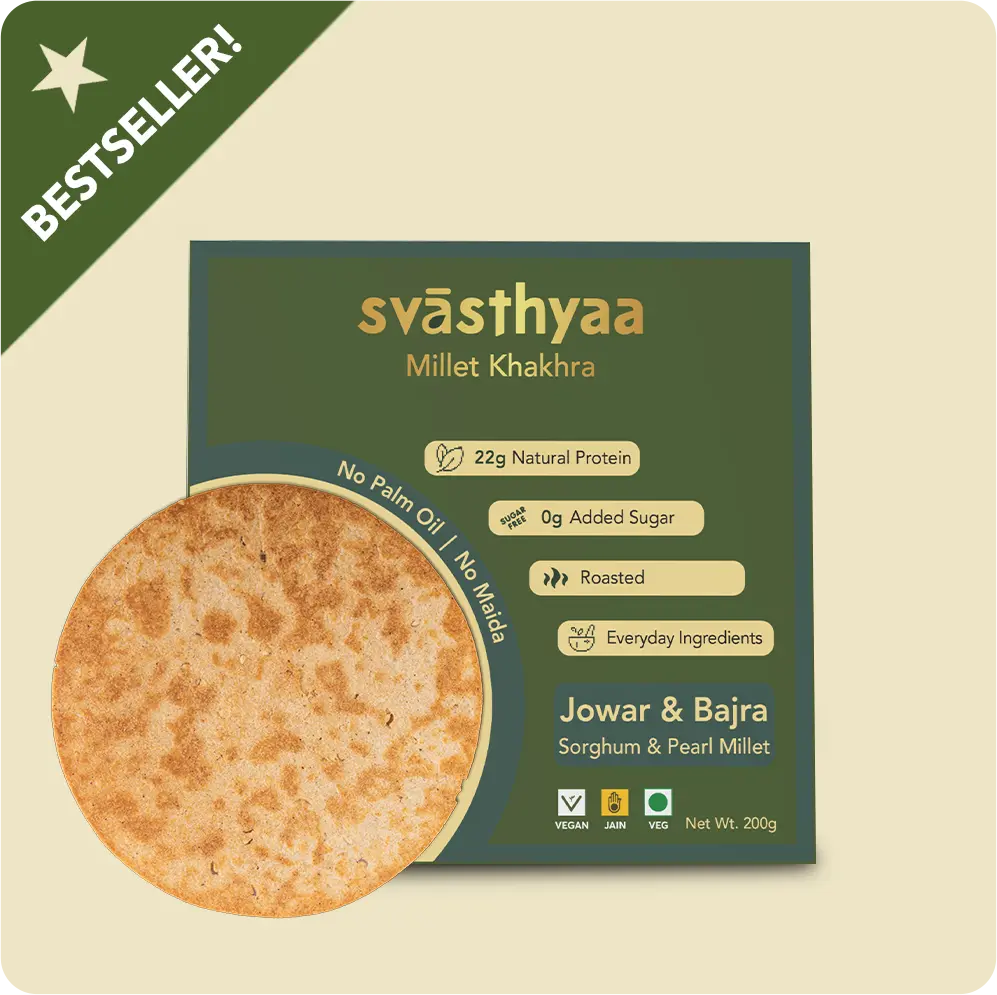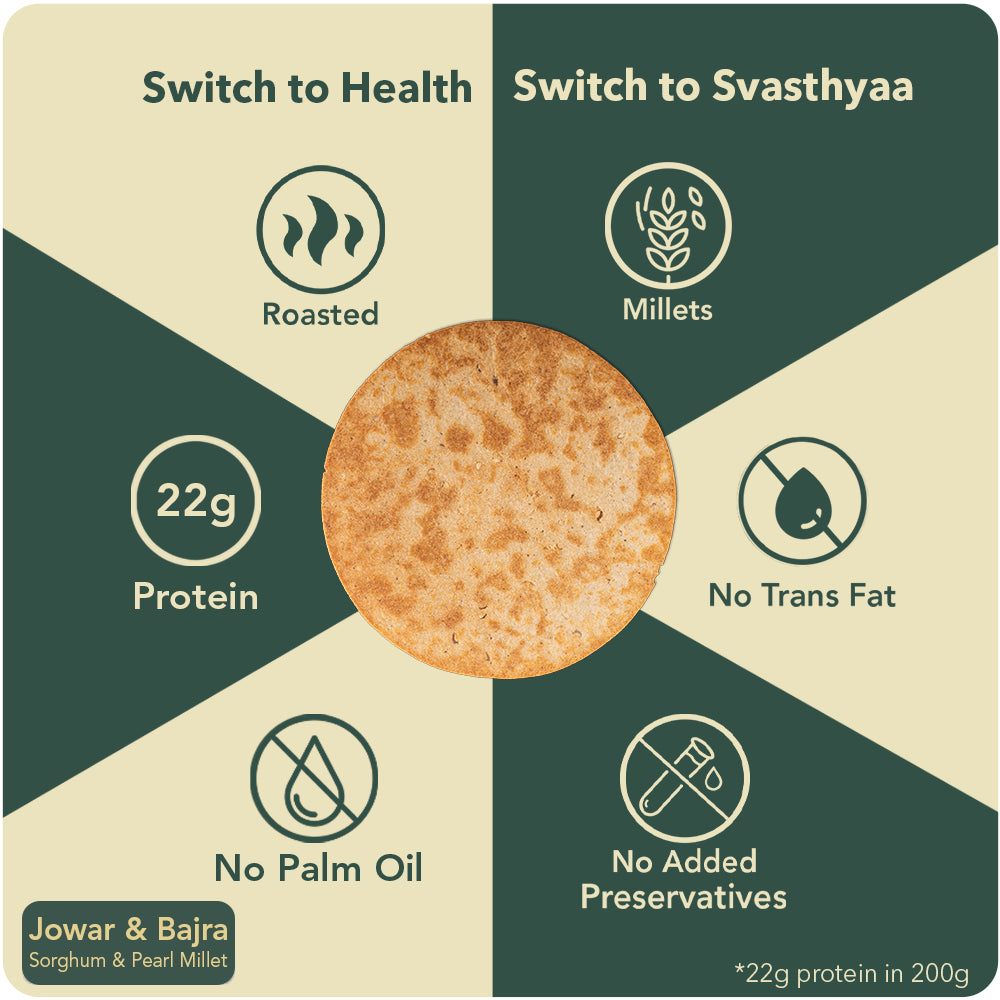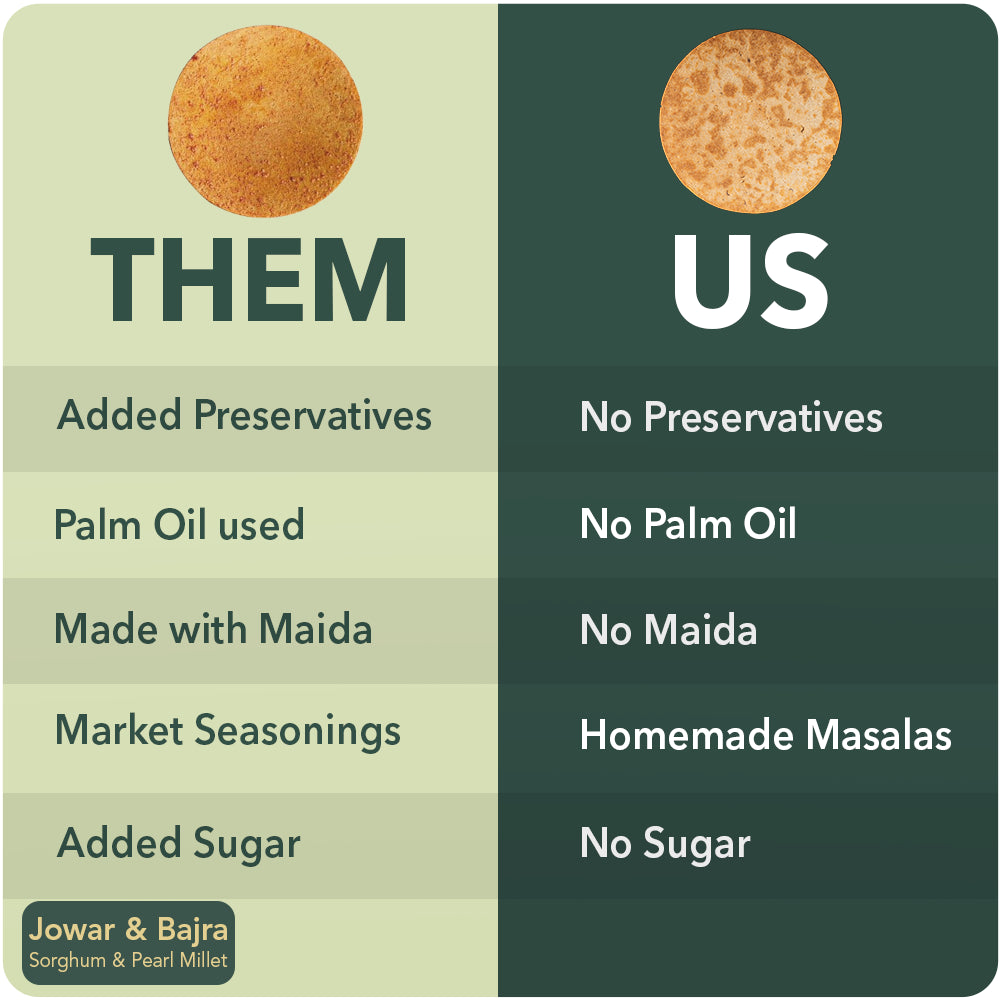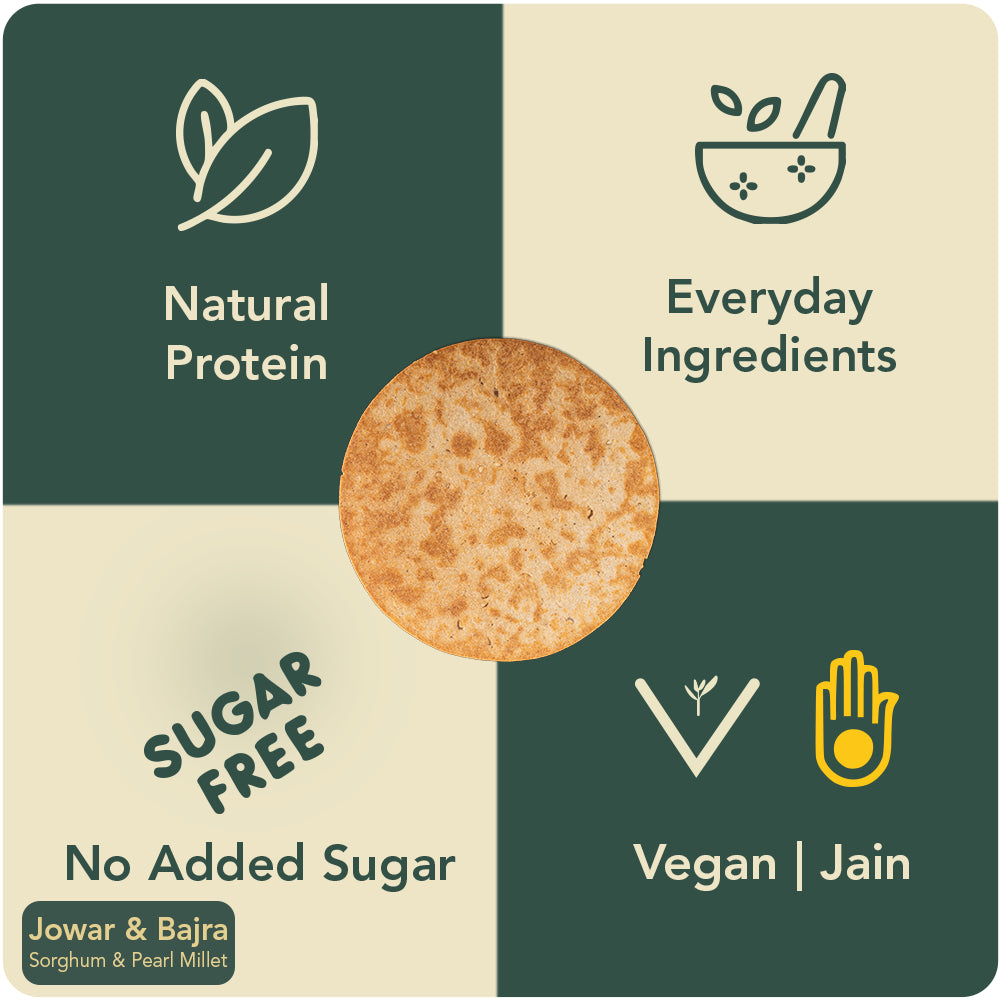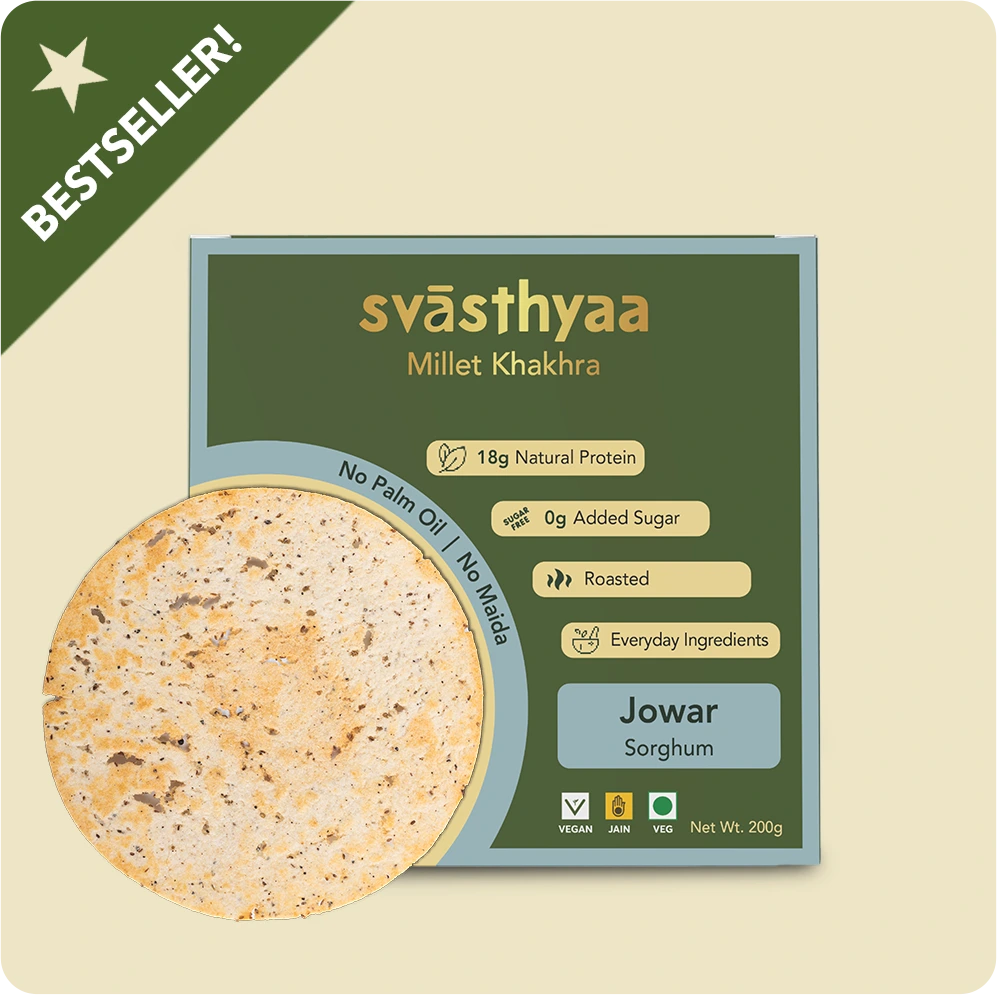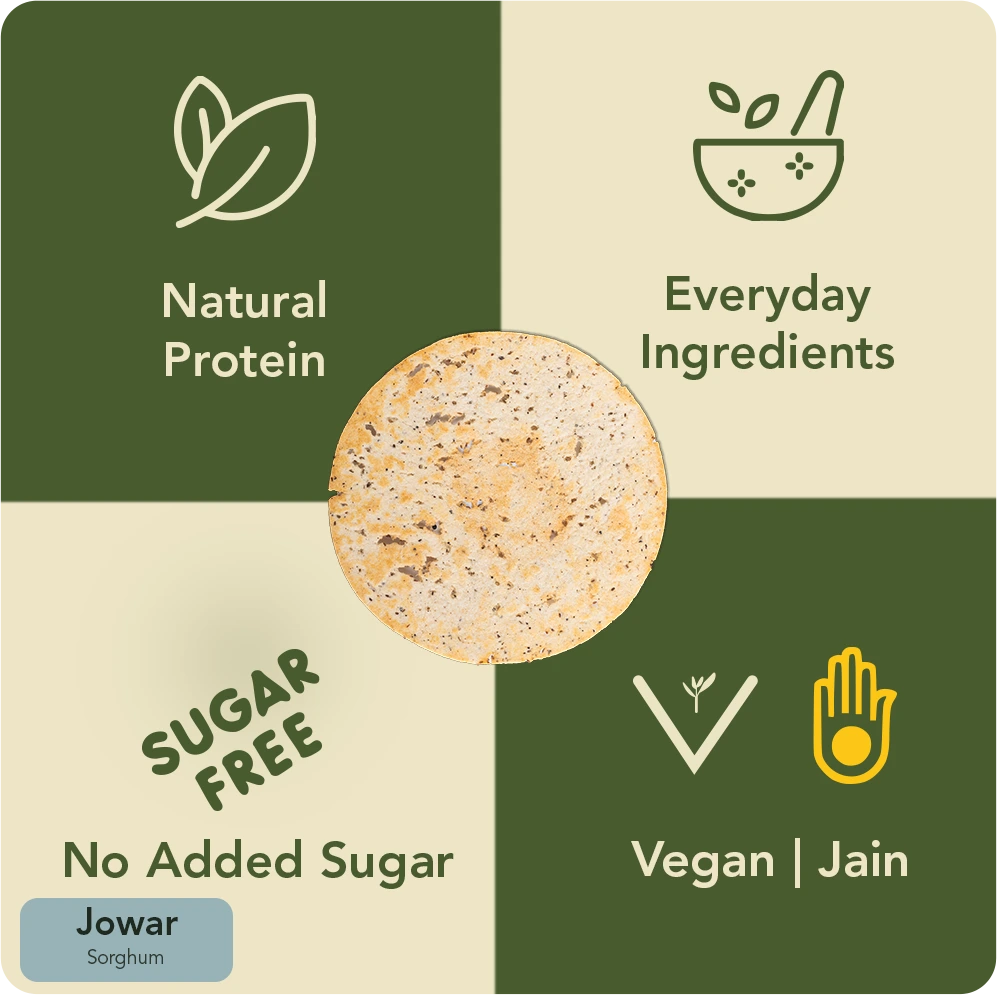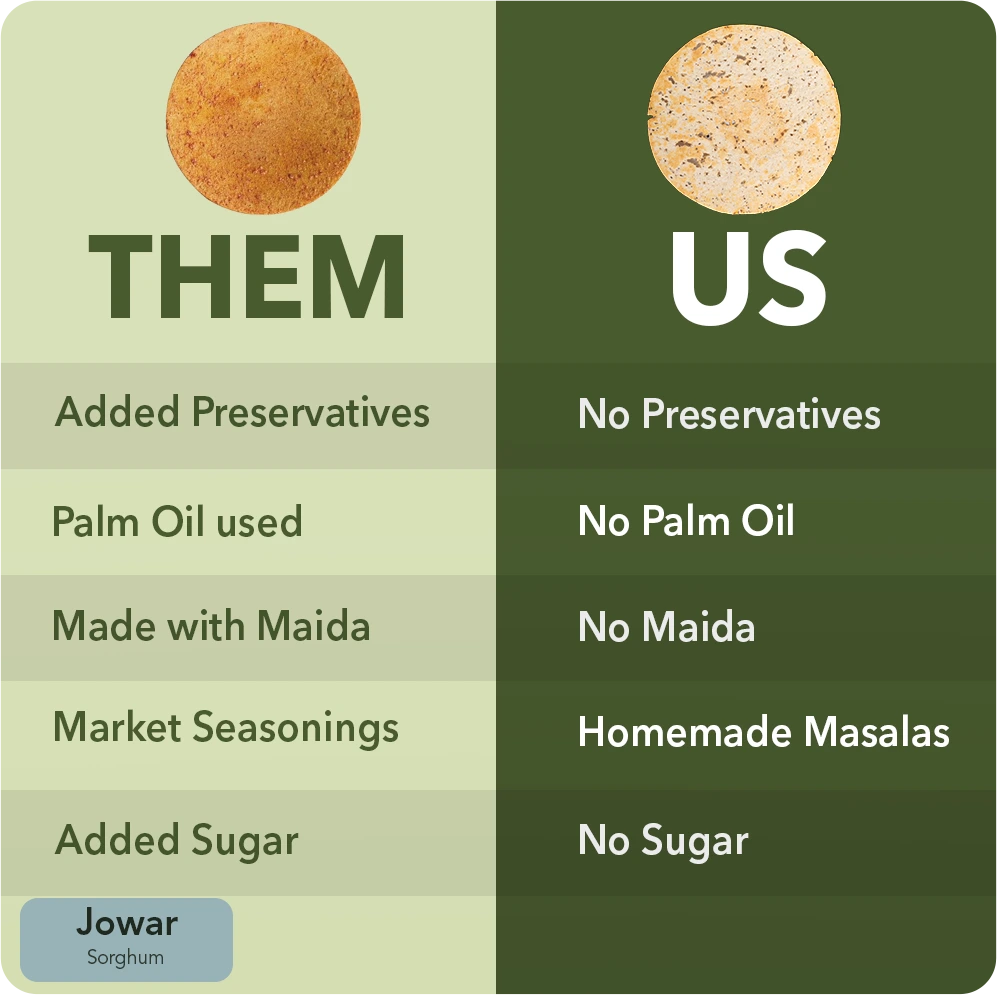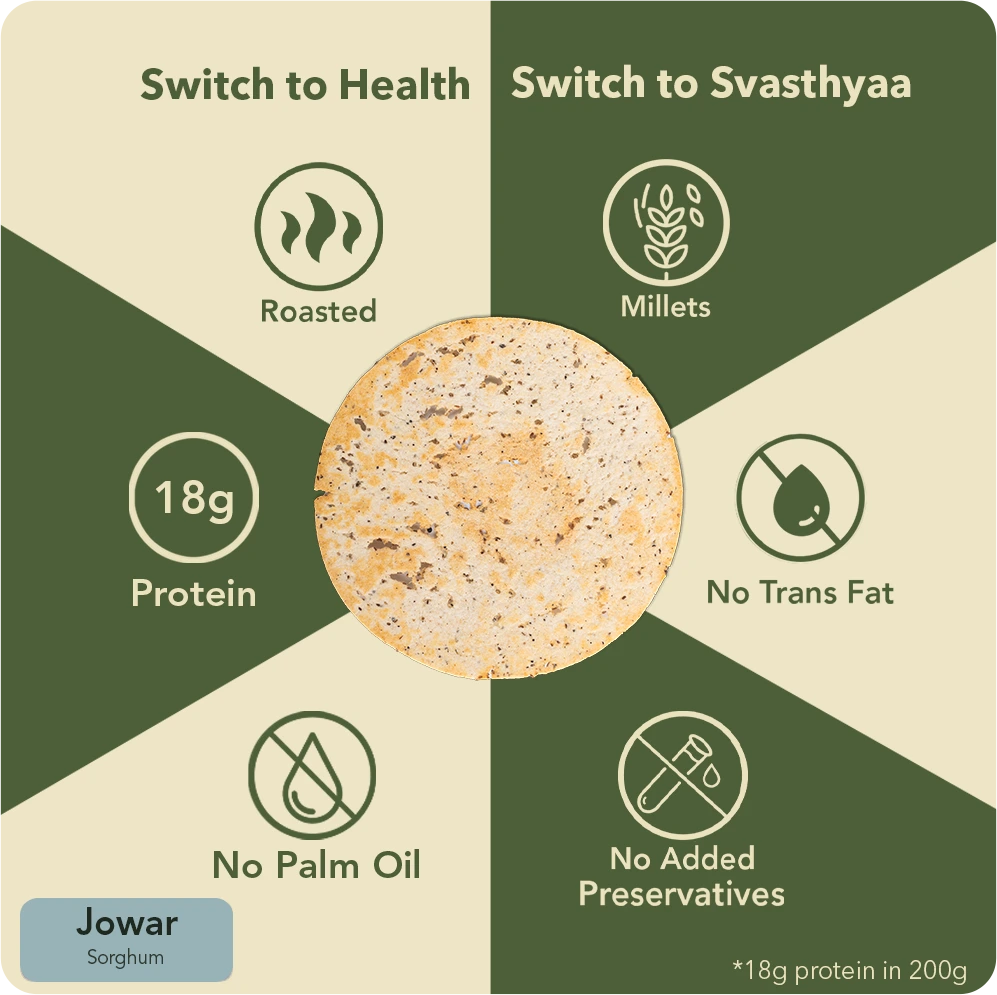3 products
3 products
Sort by:
Jowar & Bajra khakhra: A Symphony of Grains in Every Crunch
Dive into the wholesome world of our Multi-Grain khakhra, a delicious blend of multiple grains including the revered khapli (Emmer) wheat, each bringing its unique nutritional benefits to your snack time. Our khakhras are carefully crafted to provide a healthy, crunchy alternative that fits seamlessly into any diet.
Key Features:
-
Blend of Nutritious Grains: Our khakhras are enriched with a mix of grains such as Jowar and Bajra grains, ensuring each bite is packed with fiber, protein, and essential nutrients.
-
Perfectly Roasted: Enjoy the delightful crunch with every bite, thanks to our expert roasting process that eschews frying for a healthier, tastier experience.
-
Free from Palm Oil and Maida: We commit to your health and the environment by excluding palm oil and refined flour, enhancing both the quality and the sustainability of our snacks.
-
Deliciously Wholesome: With a recipe that balances taste and health, our Jowar & Bajra khakhra is a treat to the senses without the guilt.
Health Benefits:
-
Digestive Wellness: High fiber content from multiple grains aids in digestion and promotes gut health.
-
Cardiovascular Health: The absence of palm oil and the presence of whole grains help in maintaining a healthy heart by managing cholesterol levels.
-
Sustained Energy: Ideal for those looking for a long-lasting energy source, our khakhra keeps you fueled and satisfied between meals.
Perfect as a standalone snack, or paired with dips or fresh vegetables, our Multi-Grain khakhra brings nutrition and flavor to the forefront of your dietary choices. Embrace the tradition of healthy snacking with every crunch!
Jowar Khakra: Tradition in Every Bite
Rediscover the joys of traditional snacking with our Jowar Khakra, a healthy and delightful treat crafted from the goodness of ancient grains. Our Khakras combine the nutritional benefits of jowar (sorghum) and khapli (Emmer) wheat, making them a perfect snack for health-conscious individuals who do not want to compromise on taste.
Key Features:-
Enriched with Ancient Grains: Made with a wholesome blend of jowar and khapli wheat, each Khakra is a testament to the power of ancient crops known for their health benefits.
-
Roasted to Perfection: Enjoy the satisfying crunch of our Khakras, which are carefully roasted to offer a healthier alternative to traditionally fried snacks.
-
Pure Ingredients: Free from palm oil and maida, our Khakra is crafted to support not only your health but also environmental sustainability.
-
Tastefully Nutritious: With a perfect blend of natural flavors, our Khakra is not just nutritious but deliciously tasty, making it a great choice for any snacking occasion.
-
Digestive Health: Both jowar and khapli wheat are high in fiber, promoting good digestive health and regularity.
-
Heart Health: With no palm oil and made with whole grains, our Khakra helps in maintaining a healthy heart by managing cholesterol levels.
-
Energy Booster: Ideal for a quick pick-me-up, thanks to the slow-releasing energy from the ancient grains, keeping you energized throughout the day.
Ideal for a morning snack, a quick afternoon refuel, or as a healthful addition to your mealtime, our Jowar Khakra invites you to enjoy the rich flavors of tradition. Each bite not only feeds your body but also nourishes your soul with the essence of our heritage.
Bajra Millet khakhra: Wholesome Tradition, Delightful Taste
Experience the robust flavors of tradition with our Bajra khakhra, a nutritious snack crafted from the rich, rustic grains of bajra (pearl millet) and khapli (Emmer) wheat. Our khakhra is a testament to our dedication to promoting health and wellness through time-honored ingredients and modern culinary practices.
Key Features:-
Rich in Ancient Grains: Our khakhras are made with a hearty blend of bajra and khapli wheat, grains celebrated for their nutritional profiles and sustainable farming attributes.
-
Expertly Roasted: We meticulously roast each khakhra to achieve a perfect, satisfying crunch, providing a healthier alternative to traditional fried snacks.
-
No Palm Oil, No Maida: Committed to your health and the planet, our khakhras are free from palm oil and refined flours, ensuring every bite supports your wellness and environmental sustainability.
-
Deliciously Nutritious: Combining the earthy essence of bajra with the subtle sweetness of khapli wheat, our khakhra is not just a treat for the palate but also a boon for your health.
Health Benefits:
-
Supports Digestive Health: High in fiber, bajra and khapli wheat aid in digestion and promote a feeling of fullness, helping with weight management.
-
Heart-Healthy: Our wholesome ingredients contribute to cardiovascular health by maintaining lower cholesterol levels.
-
Energy Sustaining: Perfect for a nutritious snack, bajra provides lasting energy, making our khakhra an excellent choice for active lifestyles.
Perfect for any time of the day, whether paired with your morning tea, as a midday snack, or as part of a light evening meal, our Bajra khakhra invites you to indulge in the taste of tradition and the benefits of wholesome eating. Embrace a snack that’s as good for the soul as it is for the body.
What are millets?
Millets are a group of small-seeded grasses that are widely cultivated in many parts of the world, particularly in Africa and Asia. They are known for their hardiness, drought resistance, and ability to grow in poor soil conditions, making them an important source of food for millions of people around the world. In recent years, millets have gained attention for their health benefits and as a sustainable alternative to other crops.
Millets are incredibly diverse and come in many varieties, including sorghum, pearl millet, finger millet, foxtail millet, and proso millet. They can be consumed as whole grains, ground into flour, or processed into flakes or puffs. Millets are gluten-free and have a low glycemic index, which means they are a good choice for people with celiac disease, diabetes, or other health conditions.
One of the key benefits of millets is their high nutritional value. They are rich in protein, fiber, vitamins, and minerals, including iron, magnesium, and potassium. Millets are also high in antioxidants, which can help protect against cancer and other diseases. Additionally, because millets are low in fat and calories, they can be an effective part of a weight loss diet.
Millets have been cultivated for thousands of years and are an important part of many traditional cuisines around the world. In India, for example, millets have been a staple food for centuries and are commonly used to make breads, porridges, and other dishes. In Africa, millets are used to make traditional beer and porridges, and are often eaten with vegetables and meats.
In recent years, millets have gained attention as a sustainable crop that can help address food security and climate change. Millets require less water and fertilizer than other crops, making them a good choice for farmers in areas with limited resources. Additionally, because millets are highly adaptable and can grow in a variety of conditions, they can help farmers cope with the effects of climate change, such as drought and soil degradation.
Despite their many benefits, millets have been largely overlooked in recent decades, as other crops such as wheat and rice have become more popular. However, there is growing interest in millets as a healthy, sustainable food source, and efforts are underway to promote their cultivation and consumption around the world. In India, for example, the government has launched a program to promote millets and encourage farmers to cultivate them.
In conclusion, millets are a highly nutritious and sustainable crop that have the potential to play an important role in addressing global food security and climate change. As awareness of their benefits grows, it is likely that more people will turn to millets as a healthy and environmentally friendly alternative to other crops.
Svasthyaa range of millet khakhras:
- Jowar or Sorghum
- Bajra or Pearl Millet
- Jowar and Bajra
All our ready to eat millet khakhras are made with
- 80% Millets minimum
- No Maida
- Khapli Wheat where required
- High Fibre
- Roasted
- No Preservatives
- No Artificial Colours
How to eat a khakhra?
-
Click to see recipe
- Smear some organic fruit preserve or jam for a nice and healthy snack for kids.
- Make a nice yogurt dip and eat the khakhra as a cracker.
- Have with some spicy pickle and piping hot tea.


